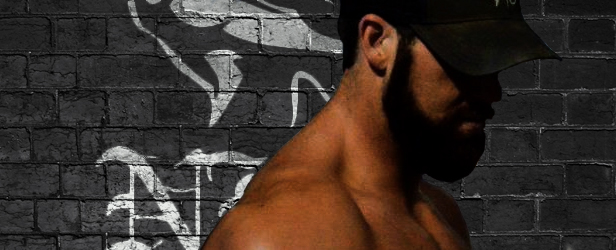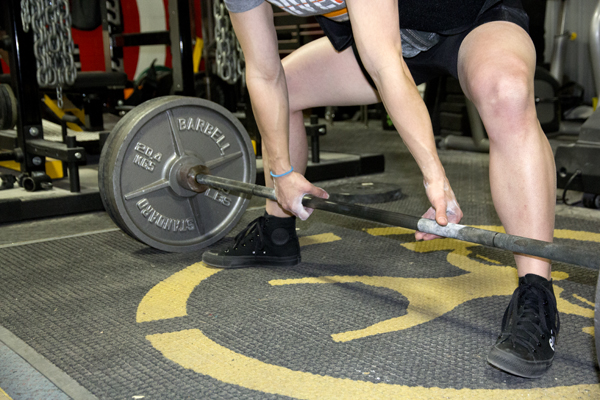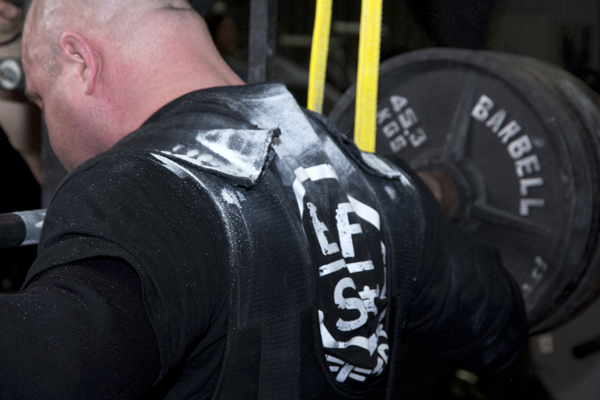
Success in powerlifting is defined by a person’s ability to constantly break previous PRs. For some people, the successes are enjoyed on a small scale in their own mind. For others, the successes are shared in front of an audience of hundreds or thousands and even more now that social media has evolved so much.
But in the quest for bigger lifts, higher totals, and new PRs, many people mismanage their approach toward such achievements. Sometimes they fail to properly set themselves up for a successful lift and either find themselves disheartened with a missed attempt or struggling to complete an attempt that could’ve been much easier. Other times a lifter may mismanage his success or defeat, slowing down his continual progress. We strive to build up our bodies in our daily battles with iron, but we can't forget to prepare our minds as well.
Here are three mental approaches to PR attempts:
#1 Approach ALL attempts the same
One thing that I'm always certain of is that there is never a shortage of people getting psyched up to lift big weights. Whether they scream, curse, get slapped, or sniff ammonia, everyone raises their excitement level to attempt the big weights. In doing so, you must be careful not to change your approach to the bar, both mentally and physically. Time and time again, I've watched lifters with solid form all the way through their warm-up attempts throw it out the window on their heaviest try. One reason for this is that they're actively cueing themselves to use correct form during the warm-up sets. Whether it's a 'chest up,' 'butt back,' or 'knees out' cue on squats or a 'tight back,' 'leg drive,' 'flair' cue on the bench, lifters self-communicate themselves into the correct movement pattern when they “know” that they can lift the weight. However, in their attempt to psych up, they fail to reestablish the self-communication that worked so well for them in previous attempts.
Another common mistake is thinking that they need to “give a little extra” in order to make an attempt. Deadlifts seem to be the worst culprit for initiating this behavior. I've seen lifters tighten their backs up, engage their hips, lock their arms out, and drive the bar upwards with solid technique on one attempt only to try and yank the bar off the ground with just their upper body on the next attempt. Thinking they have to find some special way to lift the heavier weight, they resort to “muscling” the weight up. If using the correct form got you up to that weight, it will get you through the heavier weight as well.
Remember to approach all weights the same. Whether it's 135 pounds or 1000 pounds, cue yourself correctly and trust that the proper technique and mindset you’ve been using will help you on your heaviest sets. By all means, get amped up and ready to lift big weights, but be careful that you don't take yourself to a place where you end up doing more harm than good.
#2 Never lift anything for the first time
When I played college football, our coach made the mistake of telling us that the mind didn’t know the difference between actually executing a play or just going over it in our heads. Of course, this lead to lots of discussion about why we really didn’t need to practice or condition because we could just imagine it. All jokes aside, visualization can have a huge impact on a person’s lifting when done correctly. Many people fail to capitalize on this technique when it comes to hitting big weights.
Be careful not to find yourself attempting a weight that you haven’t at least visualized yourself lifting several times. When using this technique, try to visualize the situation as closely to how it will actually feel as possible. If you're attempting the lift at the gym, picture yourself using a specific bar and lifting in a specific area. If you'll be lifting in competition, picture the crowd, the judges, and the other lifters around you. Try to make yourself feel what the weight will feel like and what the movement will feel like and always finish with yourself making a successful attempt. It may take several attempts before you can complete a full visualization without getting distracted or having trouble making it seem real. If you’re having trouble, take a break and come back and try it later. Use this technique in the days before and the day of the actual lift. Use it in between attempts to prepare for each progressive weight that you attempt.
This won't only help your body with coordinating the movement properly, but it will also help with confidence. When you’ve already completed a lift several times beforehand in your head, you'll feel as though you’ve already done it and you'll be more confident in your attempts. You won’t be surprised by how the weight feels and you won't have to try to figure out how to coordinate the movement. You won’t be distracted by the crowd, the judges, or anything else because you’ve already been there and done it before in your mind.
#3 Win or lose, reset quickly
Inevitably, you'll have good days and bad days in the sport of powerlifting. In fact, you'll probably have great days and horrible days. There will be times when you think you can lift anything put in front of you and other times when even the bar feels heavy. You must learn to take each day separately as it is. Too often, I see lifters who have had a bad day of lifting let it affect them for way longer than it should. They’ll come in the next day and attempt the same weight again or come in and do a four-hour workout to “make up” for their missed lift. Other times, I’ll see lifters hit a new PR and walk around with their egos out for way too long because of their accomplishment. Remember, what you lift that day is the only thing that matters, so whether you have a good day or a bad day, you need to learn to reset by the following morning.
If you had a bad day, tomorrow is another day to hit the gym and train smart, not do something stupid that could have a negative impact on subsequent workouts. If you had a great day, tomorrow is another day to get back at training because once a PR is set, there is only one acceptable way to go—up! Like a defensive back, you need to have a short-term memory and reset quickly, but tomorrow is another day.
The next time you’re preparing yourself for a PR, remember these three mental approaches: approach all attempts the same, use visualization to prepare you for weights that you’ve never hit before, and learn to reset quickly no matter the end result. By using these techniques, you won't only be prepared for each new PR attempt, but you'll also set yourself up for further success down the road. Lift strong and lift smart.










